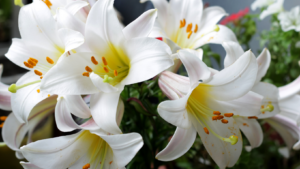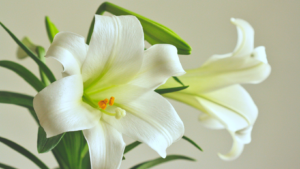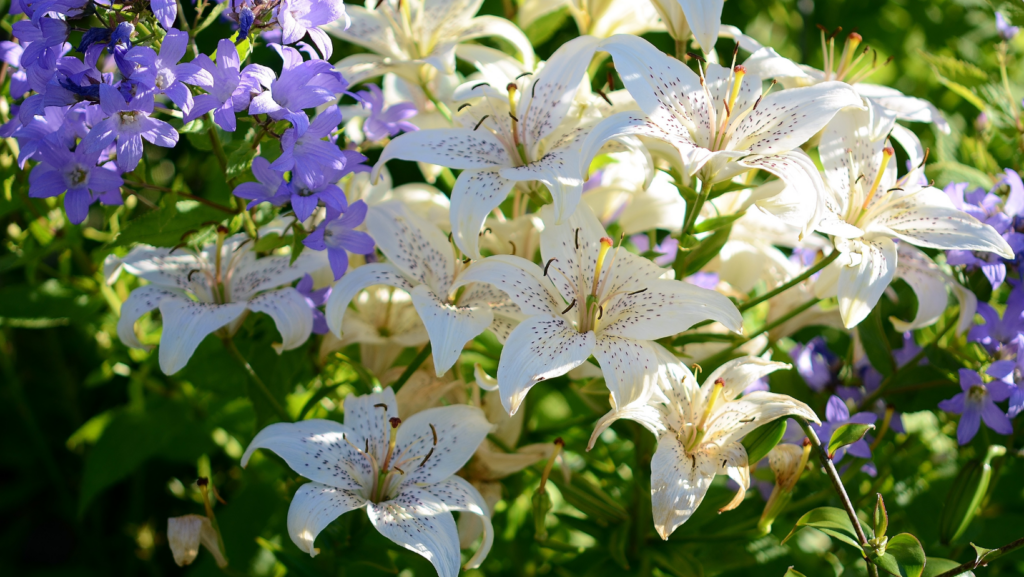In the enchanting world of botany, few flowers captivate the imagination quite like the lily. Known for its striking beauty and symbolic significance, the lily has been cherished across cultures for centuries. Each bloom tells a story of elegance and grace, making it a perennial favorite among gardeners and floral enthusiasts alike.
The lily’s allure isn’t just skin deep; its diverse range of species offers a kaleidoscope of colors and forms, each with its unique charm. From the regal trumpet lilies to the delicate Asiatic varieties, these blooms command attention wherever they’re planted. Beyond their aesthetic appeal, lilies hold a rich tapestry of meanings, often symbolizing purity, renewal, and transience.
Whether adorning a garden or enhancing a bouquet, lilies bring a touch of sophistication and timeless beauty. As more people discover the joys of cultivating these exquisite flowers, the lily continues to bloom in the hearts of nature lovers worldwide.
Flower:jzup97kalxw= Lilly
 Flower:jzup97kalxw= Lilly encompasses a diverse group of flowering plants known for their ornamental value. Characterized by large, conspicuous blossoms, these plants thrive in varied climates. Lilies are documented in horticultural guides as belonging to the Lilium genus. With over 90 species, the genus exhibits a wide range of color variations and bloom shapes.
Flower:jzup97kalxw= Lilly encompasses a diverse group of flowering plants known for their ornamental value. Characterized by large, conspicuous blossoms, these plants thrive in varied climates. Lilies are documented in horticultural guides as belonging to the Lilium genus. With over 90 species, the genus exhibits a wide range of color variations and bloom shapes.
The flower’s symbolic significance adds to its appeal. Across cultures, lilies represent purity, elegance, and divinity, often used in ceremonial contexts. Their fragrance and vibrant petals make them popular in floral arrangements.
In garden settings, lilies are valued for vertical accents due to their tall stems and upward-facing blooms. They’re frequently used in borders and focal points in landscaping designs. Enthusiasts cultivate lilies for their perennial quality and minimal maintenance, making them suitable for both amateur gardeners and professional landscapes.
Unique Characteristics
 Lilies possess distinctive features that set them apart in the floral world. Their diversity and adaptability add to their allure.
Lilies possess distinctive features that set them apart in the floral world. Their diversity and adaptability add to their allure.
Lilies exhibit a wide array of colors, ranging from pure white to deep crimson. Each hue evokes a different emotion, adding depth to floral arrangements. Their large blossoms, often six-petaled, appear in trumpet or bowl shapes. Some species feature unique patterns like speckles or stripes. These aesthetic traits enhance their appeal in both gardens and bouquets.
Growth And Habitat
Lilies adapt to various climates, thriving in temperate and subtropical regions. They prefer well-drained soil and partial to full sun. Perennial in nature, lilies return each year with minimal care. This resilience makes them suitable for diverse landscapes. Tall stems and upward-facing blooms allow them to stand out, contributing vertical interest to garden settings.
Care And Maintenance
 Proper care ensures lilies maintain their elegance and vitality. Essential practices focus on watering, soil, pests, and disease control.
Proper care ensures lilies maintain their elegance and vitality. Essential practices focus on watering, soil, pests, and disease control.
Lilies require consistent moisture, especially during the growing season. Water deeply once a week, ensuring soil remains damp, but not waterlogged. Mulch can help retain moisture. Well-drained soil ensures healthy root development. Using sandy or loamy soil blends with organic matter enhances growth. Neutral to slightly acidic pH levels support their nutritional needs.
Pest And Disease Management
Lilies face threats from pests and diseases. Common pests include aphids, lily beetles, and slugs. Regularly inspect leaves and stems. Use insecticidal soap or neem oil for aphid control. Remove lily beetles manually. To manage slugs, employ barriers or bait. Diseases such as botrytis blight and bulb rot arise in overly moist conditions. Ensure proper air circulation and avoid overhead watering to prevent fungal growth.
Symbolism And Meaning
Lilies are deeply embedded in cultural and religious symbols, carrying rich meanings that vary across regions. In Western traditions, white lilies often represent purity and virtue, frequently used in weddings and religious ceremonies. This symbolism dates back to ancient Greek mythology, where the lily was associated with Hera, the goddess of womanhood.
In Eastern cultures, lilies hold different interpretations. In China, they symbolize good luck and are commonly used in festivals and New Year celebrations to convey good fortune and happiness. In Korea, lilies represent harmony and are part of traditional ceremonies.



